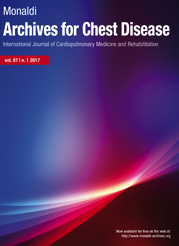Relationship between the level of asthma control, lung function and bronchodilator response in asthmatic children on inhaled corticosteroids
All claims expressed in this article are solely those of the authors and do not necessarily represent those of their affiliated organizations, or those of the publisher, the editors and the reviewers. Any product that may be evaluated in this article or claim that may be made by its manufacturer is not guaranteed or endorsed by the publisher.
Authors
This study evaluated tools for assessing asthma control in 149 children on inhaled corticosteroids, focusing on the Asthma Control Test (ACT) and the Global Initiative for Asthma criteria (GINAc). It also explored the role of lung function (LF) tests, including spirometry and bronchodilator response (BDR), in identifying uncontrolled asthma. The GINAc identified 65.8% of children as having uncontrolled asthma, compared to 25.9% by the ACT (p<0.001). Spirometry and BDR results did not differ significantly between controlled and uncontrolled asthma groups. However, abnormal LF was more frequent in children with uncontrolled asthma identified by GINAc (18.4%) than in those controlled (5.9%; p = 0.038). In ACT-identified uncontrolled cases, 18.2% had abnormal LF compared to 12.4% with controlled asthma (p=0.360). Similarly, BDR appeared in 17.3% of uncontrolled cases by GINAc and 11.8% in controlled cases, with 25% of ACT-identified uncontrolled cases showing BDR vs. 11.4% in controlled (p=0.037). Findings suggest GINAc detects more cases of uncontrolled asthma than ACT and highlights the potential value of including spirometry and BDR to complement asthma control questionnaires, mainly aiding in identifying controlled asthma cases with underlying abnormal LF or BDR.
Ethics approval
This study was approved by the Scientific Ethics Committee of the Chilean Ministry of Health, Southern Metropolitan Area of Santiago de Chile (manuscript approval number: 328).How to Cite

This work is licensed under a Creative Commons Attribution-NonCommercial 4.0 International License.






